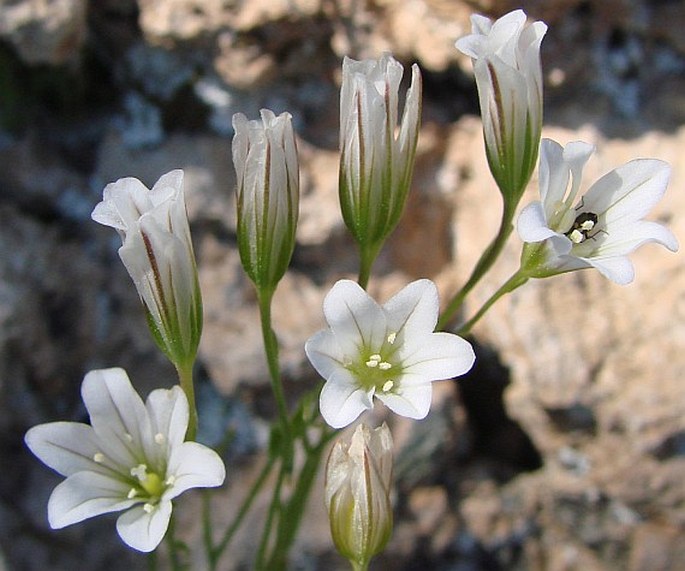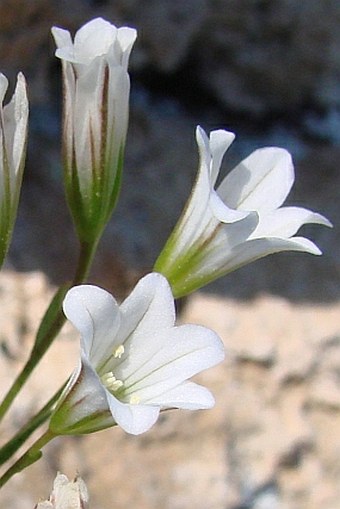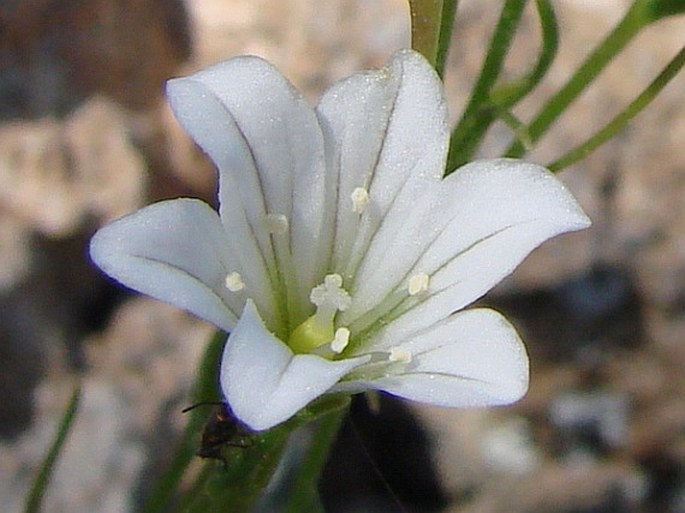Syn.: Anthericum graecum L., Gagea graeca (L.) A. Terracc., Hemierium graecum (L.) Raf., Lloydia graeca (L.) Endl. ex Kunth, Phalangium graecum (L.) Poir., Rhabdocrinum graecum (L.) Rchb., Stellaster graecus (L.) Kuntze
Family: Liliaceae Juss.

Distribution: Eastern Mediterranean species, occurs in Greece (including Crete), Turkey and Cyprus.
Ecology: It grows on rocks and cliffs, in crevices of rocks, in dry grasslands, usually on limestone soils, from sea level to elevations of about 1500 m. It flowers from March to May.

Description: Bulbous perennial herb. Stem erect, solitary, unbranched, 5–25 cm tall. Basal leaves 2–4, linear, 12 cm long, cauline alternate, linear-lanceolate. Flowers 6-merous, in a 3–5(–7)-flowered umbel, perianth-segments obovate-oblong, 7–16 mm long, white, with usually 3 purple stripes. Fruit a capsule with many seeds.



These images were taken in Cyprus, Akamas (March 29, 2010).


